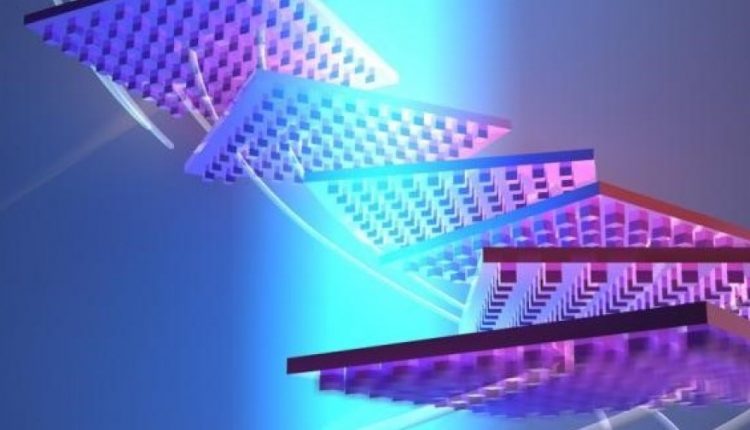Levitation may sound like the stuff of magic shows or New Age gurus, but California Institute of Technology researchers have designed a way to levitate and propel objects using only light, by creating specific nanoscale patterning on the objects’ surfaces.
Though still theoretical, the work is a step toward developing a spacecraft that could reach the nearest planet outside of our solar system in 20 years, powered and accelerated only by light.
Decades ago, the development of so-called optical tweezers enabled scientists to move and manipulate tiny objects, like nanoparticles, using the radiative pressure from a sharply focused beam of laser light. This work formed the basis for the 2018 Nobel Prize in Physics. However, optical tweezers are only able to manipulate very small objects and only at very short distances.
With this new research, objects of many different shapes and sizes–from micrometers to meters–could be manipulated with a light beam. The key is to create specific nanoscale patterns on an object’s surface. This patterning interacts with light in such a way that the object can right itself when perturbed, creating a restoring torque to keep it in the light beam. Rather than requiring highly focused laser beams, the object’s patterning encodes its own stability. The light source can also be millions of miles away.
In theory, a spacecraft could be patterned with nanoscale structures and accelerated by Earth-based laser light. Without needing to carry fuel, the spacecraft could reach very high, even relativistic speeds and possibly travel to other stars.
The researchers also envision the technology being used on Earth to enable rapid manufacturing of ever-smaller objects, like circuit boards.

